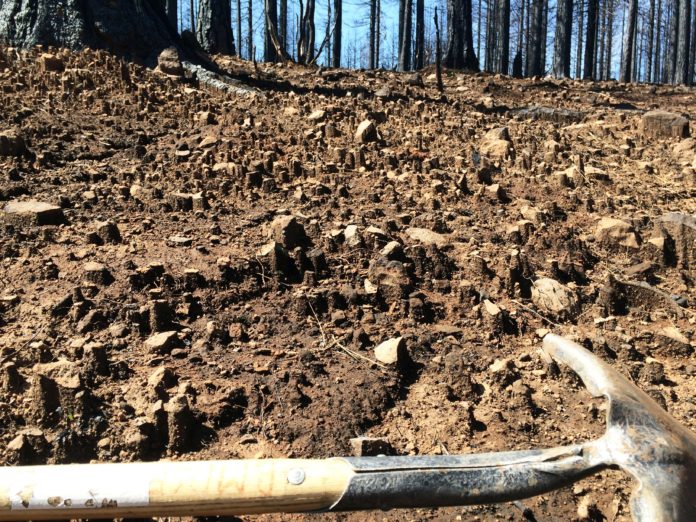
By Rich McLaughlin, Ph.D.
While many parts of the world have a long history of fire as part of the ecosystem, climate change appears to be making these fires more intense, affecting larger areas over longer periods of the year.
The response of the landscape to these fires was the subject of an extensive study of post-fire landslides in a chaparral-dominated mountain area of Southern California.1 The authors focused on landslides and debris flows that occurred in response to a heavy rainfall event in January 2019.
The rainfall totals ranged up to over 300 mm over several days, with intensities up to 50 mm/hr. Orthophotos and aerial lidar data were obtained for the area before and after this event and used to find 286 landslides caused by this event. The areas investigated were either unburned or had wildfires occur from 1 to 10 years prior to the rainfall event. Areas that had burned a year before the storm produced debris flows, while those burned three years before the storm had much smaller landslides with an order of magnitude less erosion. By five years after a burn, landslides and erosion rates were similar to those of unburned areas. Most of the landslides occurred on south-facing slopes that were slower to revegetate. The authors concluded that vegetation is a critical factor in landslide activity, and in this area, landslide activity may return to “normal” within five years after a burn.
Two other studies in California examined the effect of post-fire logging and management on erosion relative to unlogged, burned areas. Olsen et al. (2020) collected sediment from either burned or burned with salvage logging areas for five years after a fire in central California.2 They looked for the effects of logging on specific factors, including rill density, bare soil areas and ground cover (including woody debris). Logging did not increase erosion, but skid trails, where logs are dragged to a transportation area, tended to have higher rill density and sediment losses. Waterbars used to divert water off skid trails often channeled the rill flows toward the drainage areas of the slopes.
Subsoiling to decompact skid trails tended to increase erosion, although it was only practiced on two of the nine logged areas. Because bare soil areas were often where rills initiated, the authors suggest that supplemental mulching after fires would be a good management practice. In a similar study, Cole et al. (2020) also measured erosion in burned areas and compared the effects of either logging or logging plus subsoiling relative to the burned areas left alone.3 Like the previous study, they established silt fences on slopes to collect sediment over a period of five years. The logging activities reduced the amount of bare soil due to the cover from the debris left behind and resulted in less erosion compared to the burned areas with standing timber. Subsoiling along the contour, while creating localized bare soil areas, reduced sediment transport by increasing roughness and interrupting flows. The authors observed that the standing, burned trees tended to create much larger water drops than the natural rain, and this resulted in more erosion in the bare soil under the canopy (Figure 1). Overall, both studies found that salvage logging after fires can actually reduce soil erosion in burned areas.
Rich McLaughlin, Ph.D., received a B.S. in natural resource management at Virginia Tech and studied soils and soil chemistry at Purdue University for his master’s degree and doctoral degree. He is a professor and extension specialist in the Soil Science Department at North Carolina State University in Raleigh, North Carolina, specializing in erosion, sediment and turbidity control.
References
1) Rengers, F. K., L. A. McGuire, N. S. Oakley, J. W. Kean, D. M. Staley, and H. Tangengers. 2020. Landslides after wildfire: initiation, magnitude, and mobility. Landslides 17, 2631–2641. https://doi.org/10.1007/s10346-020-01506-3.
2) Olsen, W. H., J. W. Wagenbrenner, and P. R. Robichaud. 2021. Factors affecting connectivity and sediment yields following wildfire and post-fire salvage logging in California’s Sierra Nevada. Hydrological Processes. 2021;35. https://doi.org/10.1002/hyp.13984.
3)Ryan P. Cole, R. P., K. D. Bladon, J. W. Wagenbrenner, D. B. R. Coe. 2020. Hillslope sediment production after wildfire and post-fire forest management in Northern California. Hydrological Processes 34:5242–5259. DOI: 10.1002/hyp.13932.












